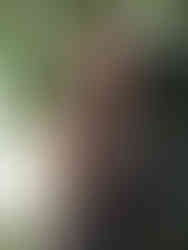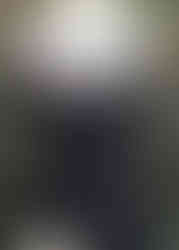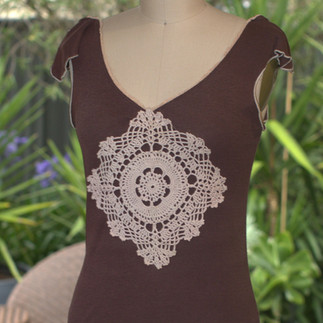Transform your Tops! Create a Designer Look - Simple DIY Ideas.
- Julianna Peric

- Jan 13, 2024
- 4 min read
Updated: Jan 22, 2024
Wash your Pieces: Before beginning your project, launder your pieces and the embellishments. If you normally throw your clothes in the dryer, you’ll want to do the same for your appliqué fabric and trims so there isn’t any surprise shrinking down the road.
Sewing Machine: Any regular home sewing machine is acceptable for sewing appliqué or embellishment. Practice with the different settings as it is best to explore more stitching options as you go along. Always check your machine tension and be sure it is threaded correctly, so test a few stitches before you get started.
Machine Needle: Ballpoint needles are specifically designed for knit fabrics. The rounded tip allows the needle to pass between the fabric threads by separating them. If your fabric has spandex or elastane in its composition, then it is best to use a stretch needle. This needle has a special coating on it to reduce friction, which in turn will help eliminate skipped stitches. I do not use a standard needle on knit or stretchy fabrics because the needles can make visible holes in the fabric, which will cause it to tear easily.
Thread: I use polyester because it allows for more stretch in your garment and makes snapped threads less likely to occur when the garment is worn. When adding stretch thread to a bobbin, either wind it by hand or hold the spool in your hand and machine wind on the slowest setting speed to ensure the thread is not overstretched when applying.
Fusible Web Adhesives: Always choose natural fibers like cotton or wool for heat-activated fusible webs because they can withstand heat without damage. If you are using applique on stretchy fabric, the best material is a fusible web that is specifically designed for applique on stretch or knit fabrics.
There are so many cheap and easy ways to embellish clothing. I have selected several designs to show you the techniques and embellishments I have used to give my garments a designer look.
GISELLE TOP
Before sewing trims test out different layout options, arrange larger pieces first then fill in the empty spaces with smaller individual pieces. I have added a bright pink silk georgette which I cut into thin strips then twisted and put under the chiffon flowers and black lace lotus flowers. Once I have the applique in place with pins, and it’s not moving, flip the top inside out and check for bumps and puckers under the applique. If you have any bumps head back to the front to the top and work them out before sewing. I had a few puckers, so I had to work on it for a bit.
Black Lotus Flower Applique (3 Petals 13cm by 8.5cm) was purchased on AliExpress from Louy’s International Store – Store ID: 1015046. It costs about AUD 12.08 for 10 Pieces and AUD 2.21 for shipping from China. I have purchased often from this store and have never had a problem.
Military-Inspired Tank Top
I love the horizontal pattern of the trim which is reminiscent of the classic regimental jackets adorned with rows of horizontal gold braid across the front.
Crane Tank Top
I came across a wonderful net fabric scattered with cranes on it. I cut the cranes from the fabric and used black chiffon flowers to adorn the top. The burst of pink is silk georgette which I secured onto the top with a few simple hand stitches. I used a double-sided fusible webbing under the cranes and then stitched the birds onto the top.
This kind of fabric manipulation and embellishment adds a unique and personal touch to the garment. The combination of different fabrics and textures creates a visually stunning and multidimensional effect. The delicate chiffon flowers contrast beautifully with the bold crane pattern, creating a harmonious balance of softness and strength in the design. Additionally, the use of hand stitching adds a special handmade quality to the garment, showcasing the care and attention to detail that went into creating it.
Vintage Tablecloth – Restyle a Tank Top
I enjoy rummaging through secondhand stores looking for unique items such as vintage tablecloths. In today’s world, ornate tablecloths seem to be abandoned, and people are opting for simple centerpieces instead. This shift towards minimalism has its charm, yet there’s something beautiful and nostalgic about the intricate designs of vintage tablecloths.
I recently stumbled upon a delightful tablecloth with a mesmerizing Croatian folklore pattern, and I instantly knew it would be perfect for embellishing a top. The vibrant pattern and captivating stitch detail instantly transported me to another time and place.
Vintage tablecloths are usually crafted from 100% linen or cotton, which not only makes them a joy to work with but also ensures easy care and maintenance. Apart from adorning dining tables, these elegant textiles can be repurposed into stunning circle skirts. The clean finished edges of these tablecloths often eliminate the need for additional hemming, simplifying the process while maintaining a polished and graceful aesthetic. Embroidered Trim Collar Inserts
Embroidered neck trims have gained popularity due to their numerous advantages over using a sewing machine for embroidery. Not only is it a quicker and easier method, but it also proves to be more cost-effective in the long run. The cost of an insert can range from AUD 2.00 to AUD 3.50 per piece, making neck trims a compelling choice for individuals seeking quality embroidery without breaking the bank.
Vintage Doilies – Upcycle any top!
For this top, I used a machine-made doily. You ask, “How do you know it’s machine-made?” Because it is perfect. Handmade doilies are not perfect because the tension tends to differ from one stitch to another.
The intricate pattern detail of the large doily takes center stage in my design, serving as the singular focal point around which the entire aesthetic revolves. Throughout my various creative projects, I’ve consistently turned to the versatility and diverse array of intricate designs offered by doilies. Their unique ability to effortlessly complement different themes and styles has made them an invaluable asset in my design work.
In particular, I have found that natural fiber doilies provide an excellent canvas for my experimentation with dying processes. Whether it’s utilizing food colouring, tea bags, or coffee, the intricate patterns of the doilies react in fascinating ways, allowing me to create truly unique and personalized pieces. This organic approach to enriching the doilies with rich, natural hues has become a hallmark of my creative process, adding depth and nuance to each project.








































Comments